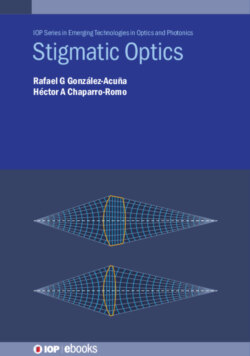Читать книгу Stigmatic Optics - Rafael G González-Acuña - Страница 18
На сайте Литреса книга снята с продажи.
1.7 Ampère’s law
ОглавлениеAmpère’s law, also called the Ampère–Maxwell law, is generally written in its integral form as,
∮cB⃗·dl⃗=μ0Ienc+ε0ddt∫SE⃗·n⃗da.(1.15)
The left side of equation (1.15) tells us about the circulation of the magnetic field around a closed path C. On the right side, we have two elements that originate the magnetic field. The first one is a steady current given by Ienc. The other one is the change in time of the electric flux through a surface bounded by C.
Please notice that in equation (1.15) the factor μ0 is a constant called the magnetic permeability of free space. In the international system of units, where force is in newtons (N) and current in amperes (A),
μ0=1.2566370614×10−6NA−2.(1.16)
Well, what equation (1.15) tells us is that an electric current or a changing electric flux through a surface produces a circulating magnetic field around any path that bounds that surface.
Now due the Stokes theorem, we can express the Ampère–Maxwell law as its differential form,
∇×B⃗=μ0J⃗+ε0∂E⃗∂t,(1.17)
The left side of the equation (1.17) is the circulating magnetic field. On the right side are the sources of the circulating magnetic field. Notice that the first term in the right side of equation (1.17), J⃗ is the current density vector. The second term on the right side of the mentioned equation is the rate of change of the electric field with time.
Therefore, what the Ampère–Maxwell law in its differential form tells us is that a circulating magnetic field is produced by an electric current and by an electric field that changes with time.
